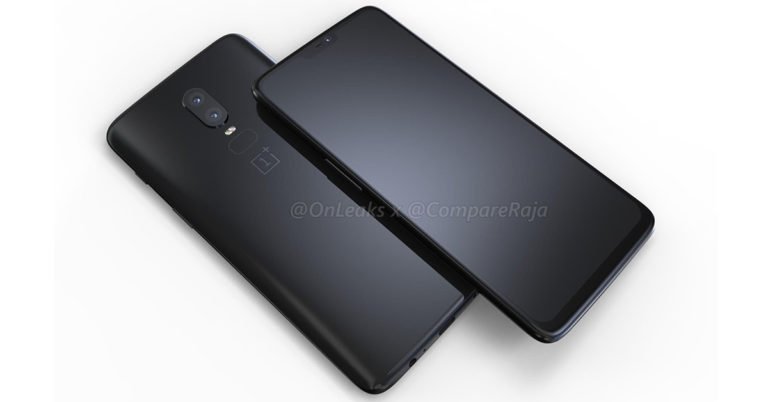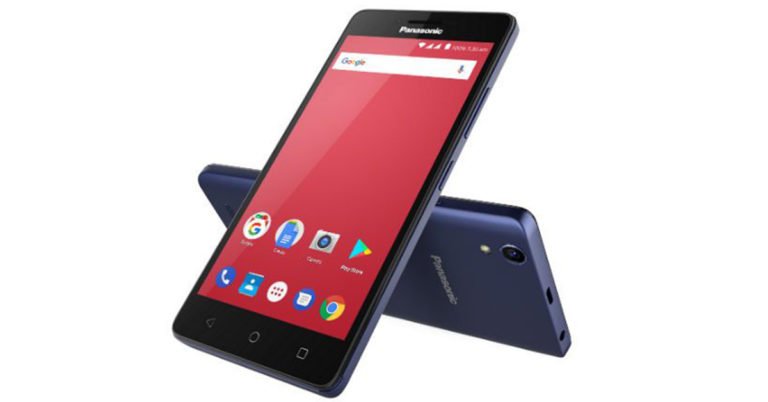Samsung’s new ad makes fun of Apple, again
The rivalry between Apple and Samsung is no secret. Both the technology giants leave no chance of taking pot-shots at each other and even involved in a long-standing legal battle. Amid all this, Samsung has released an advertisement for its flagship Galaxy S9. The advertisement shows how Samsung’s Galaxy S9 is great, and at the same time pokes fun at Apple.
This isn’t the first time that this is happening, as we have seen the story of this ad in previous Samsung advertisements too. The ad shows an iPhone user gets frustrated with their Apple device, sees how Samsung users around her are happy with their superior smartphones, and then eventually upgrades to Samsung.
https://www.youtube.com/watch?v=3qhW1sDPHYI
If we talk about this particular ad, it shows a woman using an iPhone in various situations where her smartphone lets her down, and Samsung Galaxy S9 users doing the same things with their phones like it’s a cakewalk. It shows how the iPhone isn’t waterproof, and how a task as simple as getting tickets scanned at the airport can be tough with it. When the woman goes to an Apple Store to complain about the issue, the executive tells her to switch off the performance management. The advertisement ends with the woman walking past a man with the notch haircut standing in front of an iPhone X billboard and finally being happy about upgrading to Samsung Galaxy S9.
Like we said, it’s a storyline we have seen in previous Samsung advertisements. However, one thing that we found irksome was that the woman in the advertisement is shown using Apple iPhone 6. Using a smartphone that was launched almost four years back and comparing it to their current flagship is not very fair. The ad would have made more sense had it showcased iPhone X or even iPhone 8 or 8 Plus instead of a model as old as iPhone 6.
Also it wasn’t hard to notice Samsung calling out Apple for the battery fiasco it admitted to late last year, but we found it a little strange that the Apple employee doesn’t mention the option of getting the iPhone’s battery replaced at a subsidised rate. While iPhone users who feel that their phone is too slow can immediately switch to Samsung Galaxy if they think it’ll solve their problems, but getting the subsidised battery is any day a more affordable option.
HTC U12 Plus’ specifications and pictures leaked ahead of its launch
Just a few days before the launch of HTC’s next flagship device, HTC U12 Plus, all the specifications of the smartphone along with its pictures have been leaked. Venture Beat’s Evan Blass has tweeted a picture of the upcoming smartphone along with its entire spec sheet.
Although it has not been confirmed by the company that it is launching the HTC U12 Plus smartphone on its May 23 event, various media reports suggest so. But the timing of Evan Blass leaking HTC U12 Plus’ renders and specs could possibly mean the company is indeed taking wraps off its upcoming flagship device next week.
As suggested by the images of the smartphone, HTC U12 Plus is likely to sport the translucent colour that we earlier saw in HTC U11. It has been reported that HTC U12 Plus will come in four colour variants — Black, Red Rose, Violet, and Translucent.
https://twitter.com/evleaks/status/997108920639524869
Although one can’t be sure of the colours of the device on seeing these renders, what is very evident is a dual rear camera setup as well as dual cameras on the front panel. And it’s very refreshing to see a flagship that comes without the notch on its display.
According to the leaked spec sheet, HTC U12 Plus will feature a 6-inch Quad HD+ Super LCD 6 display with an 18:9 aspect ratio and Corning Gorilla Glass protection. The device will be powered by Qualcomm Snapdragon 845 processor paired with 6GB RAM and will be available in two storage variants – 64GB and 128GB. For more storage, users would have the option of installing microSD cards of up to 2TB. The leaked spec sheet suggests that the device runs Android 8.0 Oreo with HTC Sense 2 and will get an upgrade for Android P.
For imaging duties, HTC U12 Plus will sport 12MP wide angle camera and 16MP telephoto camera at the back. For selfies and video calls, there are dual front facing cameras that support AR stickers and Face Unlock. The rear cameras of the device are said to record 4K videos at 60fps – a feature that OnePlus was touting for its OnePlus 6 smartphone.
The smartphone will also come with always-on listening support for Google Assistant and Amazon Alexa and will be backed by a 3,500mAh battery. If the HTC U12 Plus is actually being launched on May 23, there’s not much left for the company to announce apart from the pricing and availability details of the phone.
The price of this iPhone X starts at $4,500, here’s why
An accessory maker from Russia named Caviar has started selling a ‘new’ version of iPhone X for $4,500. So, it’ll basically cost you way more than the original iPhone X. But wait, that’s just the cost of the 64GB variant. If you are planning to buy the 256GB variant of this special iPhone X, you will have to pay $4,805. Wondering what is so special about this ‘new’ version of iPhone X? According to media reports, it is a solar powered version of the iPhone X. In fact, Caviar is branding the device as iPhone X Tesla. Yes, you read that right.
It is not the first time that we have read reports about this version of iPhone X, as the company had initially announced its plans in November. And like we mentioned before, Caviar is an accessory maker from Russia, so obviously it can have nothing to do with making iPhones or Tesla. In fact, the $4,500 iPhone X Tesla’s functions are there in the smartphone at all?
Before you get too confused, we’ll tell you that iPhone X Tesla is a phone case that comes with solar panels on it back. The cases have the iPhone X in them already and the solar panels on them power a secondary battery. This can used to provide charge to iPhone’s battery when it runs out by just pressing the power button on the back.
The solar panel of iPhone X Tesla is shock-resistant and is surrounded by a carbon fiber case. The case has anodized buttons on the edges and golden elements to embellish its rear panel. Needless to say, the iPhone X Tesla phone case is very thick and is claimed to be IP67 water and dust resistance.
To make it more exclusive, Caviar is only manufacturing 999 units and is adding an individual number to them in the order in which they were produced.
Furthermore, to pay a tribute to Elon Musk, the first unit of the iPhone X Tesla has “Made on Earth by Humans” engraved on it. For those who don’t know, back in February, when Elon Musk’s SpaceX launched the first flight of its Falcon Heavy rocket with a red Tesla Roadster in space, “Made on Earth by Humans” was the special message that Musk had written on it for aliens. Caviar said in a statement that the company is inspired by ‘three men of science,’ namely Nikola Tesla, Steve Jobs, and Elon Musk.
Lenovo Spectra Fitness Band HX03F Unboxing and Details
Lenovo Spectra Fitness Band HX03F Highlights and Specs:
- Colorful TFT Screen
- Sports Statistics & Motion Reminder
- Multi Interface for Choice
- USB Direct Charging and Removable Strap
- Intelligent Assistant
- Digital Smart Band
- Made of Silicone
- Bluetooth Enabled
- Step Counter
- Heart Rate Sensor
- TFT-LCD Display 180×60 Pixels
- Water Resistant
OnePlus 6 vs OnePlus 5T: Comparison, should you buy it right now?
Just six months after the launch of its previous smartphone, OnePlus unveiled its next flagship OnePlus 6 yesterday at an event in London. Although the OnePlus 6 comes with a revamped design and a slew of changes, we couldn’t help but notice that there are a number of similarities in the two devices. Here, we have compared the two smartphones to let you know what’s new and what has been retained:
- Design: One of the most obvious and evident changes between OnePlus 6 and OnePlus 5T can be seen in the designs of the two smartphones. OnePlus 6 comes with an all glass body protected by Gorilla Glass 5 on both front and back. OnePlus 5T on the other hand comes with a metal unibody design and only its front panel is protected by Gorilla Glass 5. On the back panel, OnePlus 6 bears a vertical dual rear camera setup while OnePlus 5T has a horizontal one. Also, while OnePlus 5T was available in Midnight Black, Lava Red and Star Wars Editions, OnePlus 6 comes in Midnight Black, Mirror Black and Silk White Limited Edition.
- Display: There is a difference in the displays of the two devices too. While OnePlus 5T sports a 6.01-inch full-HD+ Full Optic AMOLED display and comes with an 18:9 aspect ratio, OnePlus 6 features a 6.28-inch full-HD+ Full Optic AMOLED display and has an aspect ratio of 19:9. OnePlus 6’ also comes with an iPhone-like Notch that houses the front camera, proximity sensor, and earpiece of the device.
- Processor: While OnePlus 5T was powered by Qualcomm’s Snapdragon 835 processor, the company’s latest and most powerful processor yet — Snapdragon 845 — powers the OnePlus 6. However, it is notable that when OnePlus 5T was launched, Snapdragon 845 was not launched.
- Cameras: Both the smartphones come with dual rear cameras and a selfie camera. OnePlus 5T comes with a 16MP Sony IMX398 primary sensor along with 20MP Sony IMX376K sensor. The dual rear cameras come with dual LED flash. Speaking of OnePlus 6, its dual rear cameras come with the same megapixel count, but the 16MP camera has a Sony MX519 sensor and the 20MP camera has a Sony IM376K sensor. They also have OIS and can record Slow Motion videos up to 480 frames per second. Both the smartphones sport a 16MP selfie camera with a Sony IMX371 sensor — but the only difference is that the one on OnePlus 6 supports Potrait mode.
HMD Global launches Nokia X6: All you need to know
HMD Global has launched its Nokia X6 smartphone at an event in Beijing. With Nokia X6, the company has joined the iPhone-like Notch design bandwagon and has also included features like dual rear cameras, and Do Not Disturb mode for gaming in the smartphone.
Specifications
HMD Global’s Nokia X6 features a 5.8-inch Full HD+ display that is protected by a layer of 2.5D Gorilla Glass 3. Powered by an octa-core Snapdragon 636 processor the smartphone runs Android 8.1 Oreo. It comes in three variants – one with 4GB RAM and 32GB internal storage, the other with 4GB RAM and 64GB inbuilt storage and there’s also a bigger 6GB RAM variant that has 64GB of onboard storage. Nokia X6 can hold microSD cards of up to 256GB.
For imaging duties, the smartphone boats of a dual rear camera setup with 16MP and 5MP sensors. The 5MP secondary rear camera has a monochrome sensor. On flipping the smartphone, you’ll be greeted by a 16MP selfie camera. HMD Global has highlighted the fact that the cameras in Nokia X6 come with AI features like optimised colour contrast and face recognition. The cameras are also said to have support for HDR and come with the Bothie feature that we previously saw in Nokia 8 and Nokia 8 Sirocco. For those who don’t know, with the Bothie feature, the rear and selfie cameras of the phone work simultaneously to click one picture. So, the picture has your selfie and also the scene or object that you’re focussing on with your smartphone’s rear camera.
Nokia X6 comes with face unlock feature and it also has a fingerprint sensor on its rear panel. The smartphone houses a 3060mAh battery and supports Quick Charge 3.0. It comes with connectivity options like 4G VoLTE, Wi-Fi, Bluetooth v5.0, USB Type-C port and a 3.5mm jack.
Price
In China, the 4GB RAM/32GB storage variant of Nokia X6 is priced at CNY 1,299, while 4GB RAM/64GB storage version bears a price tag of CNY 1,499. Customers would have to spend CNY 1,699 if they want the 6GB RAM variant of the device. There is currently no word on the phone’s India pricing and availability yet.
OnePlus 6 launched: Price, specs and more
OnePlus has finally taken the wraps off its much awaited and talked about flagship smartphone OnePlus 6. Launched today at an event in London, OnePlus comes with high-end specifications and a revamped design with an all-glass body. OnePlus also has an event planned for India on May 17, where it will be giving all the information about the local pricing and availability of the device.
Specifications
OnePlus’ flagship smartphone sports a 6.28-inch FHD+ Full Optic AMOLED display that comes with an 19:9 aspect ratio. The phone’s rear panel is also made of glass and is protected by Gorilla Glass 5. It also has an iPhone X-like notch that houses the front camera, earpiece, and proximity sensor. The newly launched OnePlus 6 comes with new gestures to perform various tasks on the device.
Powered by Qualcomm latest processor, Snapdragon 845, OnePlus 6 runs Android 8.1 Oreo topped with the company’s own OxygenOS 5.1. The developer preview of Android P is also said to roll out on the smartphone shortly.
The smartphone is available in three storage variants — 6GB RAM/64GB inbuilt storage, 8GB RAM/128GB onboard storage and 8GB RAM/256GB of internal storage. However, the smartphone lacks support for a microSD card. It also comes in three colour variants — Midnight Black, Mirror Black and Silk White( Limited Edition).
For imaging duties, OnePlus 6 sports a dual rear camera setup with a 16MP Sony IMX519 sensor coupled with a 20MP Sony IM376K sensor. The dual rear cameras come with dual LED flash. For selfies, there is a 16MP front facing snapper. The camera app of the smartphone comes with Optical Image Stabilization and a Smart Capture mode that will automatically optimize camera settings. Besides this, there is Slow Motion video recording — using which one can record 480 frames per second — and the smartphone can shoot videos with 4K resolution at 60fps. There is also an inbuilt video editor and support for HDR and Portrait modes. In fact, the selfie camera of OnePlus 6 also offers Portrait mode and supports Face Unlock. The company claims that the Face Unlock feature can unlock the device in just 0.4 second.
OnePlus is also touting the Gaming mode of the device. According to the company, the Gaming Mode of OnePlus 6 has an improved Gaming DND mode, and can apparently push up performance of the game that the user is playing.
The connectivity options of the smartphone include 4G VoLTE, Wi-Fi, Bluetooth v5.0, NFC, USB Type-C, and a 3.5mm headphone jack. OnePlus 6 also comes with a fingerprint sensor on its back panel, which is claimed to unlock the smartphone in 0.2 seconds. The smartphone houses a 3,300mAh battery with the company’s Dash Charge fast charging technology.
Pricing and availability
The 6GB RAM variant of the smartphone is available for $529 in US, GBP 469 in UK and EUR 519 in the rest of Europe. The 8GB RAM/128GB variant is priced at $579 in the United States, GBP 519 in United Kingdom and EUR 569 in Europe. Lastly, the OnePlus 6 variant with 8GB RAM and 256GB of storage costs $629 in US, GBP 569 in UK and EUR 619 in Europe. The pricing of OnePlus 6 in India is yet to be declared. However, the smartphone can be bought from Amazon India’s website, which is the exclusive online partner for OnePlus 6. Besides this, the company will also be setting up pop-up stores starting May 21 and the smartphone will be available in open sales starting May 22.
Note that only Midnight Black and Mirror Black variants of the smartphone will be available starting May 22, if you want to get your hands on the Silk White Limited Edition, you will have to wait till June 5.
Update:
The Indian price of the OnePlus 6 starts from Rs 34,999 and the Avengers edition will be available at Rs 44,999. Both Amazon exclusive. Sales start from 22 May, 2018 for normal edition, with early access sale for Prime members on 21 May. Rs 2,000 cash back on SBI cards is available too.
Comparison: Oppo Realme 1 vs Xiaomi Redmi Note 5 Pro vs Asus Zenfone Max Pro M1
Chinese smartphone maker Oppo yesterday launched its Realme 1 smartphone. The smartphone is available in three storage variants and all three of them are priced under Rs 15,000. Oppo’s Realme 1 is the third smartphone to be launched in this price segment in the last few weeks, the other two being Xiaomi’s Redmi Note 5 Pro and Asus’ Zenfone Max Pro M1. All three smartphones come packed with specifications that are good for this segment. However, the perfect one for you may depend on what you are looking for in a smartphone — whether it is a big battery or a great selfie camera. Here, we compare the specifications of all the three smartphones to make it easier for you to decide which one is the perfect buy for you:
Display
Oppo Realme 1: 6-inch full-HD+ (1080x2160p) display
Xiaomi Redmi Note 5 Pro: 5.99-inch FHD+ display with 18:9 aspect ratio
Asus Zenfone Max Pro M1: 5.99-inch full HD+ display with 18:9 aspect ratio
Processor
Oppo Realme 1: MediaTek’s 12nm octa-core Helio P60 processor
Xiaomi Redmi Note 5 Pro: Qualcomm Snapdragon 636 processor
Asus Zenfone Max Pro M1: Qualcomm Snapdragon 636 processor
Primary camera
Oppo Realme 1: 13MP rear camera. Note that the camera app of Oppo Realme 1 comes with support for AR stickers that can be applied to photos taken by both cameras.
Xiaomi Redmi Note 5 Pro: Dual rear camera setup with 12MP and 5MP sensors.
Asus Zenfone Max Pro M1: 13MP+5MP dual rear cameras with LED flash (A new variant with 16MP+5MP dual rear camera setup will also be launched soon).
Selfie camera
Oppo Realme 1: 8MP front facing camera with AI Beauty 2.0 feature.
Xiaomi Redmi Note 5 Pro: 20 selfie camera with LED flash and Xiaomi’s AI learning mechanism.
Asus Zenfone Max Pro M1: 8MP front-facing snapper with Snapdragon camera app interface.
RAM and storage
Oppo Realme 1: 3GB RAM/32GB internal storage, 4GB RAM/64GB onboard storage and 6GB RAM/128GB storage.
Xiaomi Redmi Note 5 Pro: 4GB RAM/64GB internal storage, 6GB RAM/64GB onboard storage
Asus Zenfone Max Pro M1: The smartphone is presently available in two storage variants — 3GB RAM/32GB onboard storage, 4GB RAM/64GB internal storage. Another variant with 6GB RAM/64GB storage is set to launch in India soon.
Support for microSD card
Oppo Realme 1: Up to 256GB
Xiaomi Redmi Note 5 Pro: Up to 128GB
Asus Zenfone Max Pro M1: Up to 2TB
Battery
Oppo Realme 1: 3,410mAh
Xiaomi Redmi Note 5 Pro: 4,000mAh
Asus Zenfone Max Pro M1: 5,000mAh
Operating system
Oppo Realme 1: Android 8.1 Oreo skinned with ColorOS 5.0
Xiaomi Redmi Note 5 Pro: MIUI 9 based on Android 7.1.1 Nougat
Asus Zenfone Max Pro M1: Android 8.1 Oreo
Price
Oppo Realme 1: The cost of 3GB RAM variant is Rs 8,990, the 4GB RAM variant is priced at Rs 10,990, and the 6GB RAM variant bears a price tag of Rs 13,990.
Xiaomi Redmi Note 5 Pro:The 3GB RAM variant is priced at Rs 14,999 and the 6GB RAM version costs Rs 16,999.
Asus Zenfone Max Pro M1: The 3GB RAM version costs Rs 10,999 and the 4GB RAM bears a price tag of Rs 12,999. The upcoming 6GB RAM version of the smartphone will be launched at Rs 14,999.
How to watch OnePlus 6 launch Live Stream today
Today is the day the next generation of one of the most popular Android smartphone will be launched globally. The Chinese brand OnePlus will launch its new variant in the global market at 9:30 PM India Time. This will be followed by the China launch tomorrow 17th of May and on the same day they will also launch in India. The Chinese launch is scheduled to take place in the morning while the Indian launch will take place at 3 PM India Time in Mumbai.
Lot of buzz has already been created around the OnePlus 6 including many leaks of the smartphone and also its Indian price. The smartphone will be available in two variants in India. 6GB RAM and 64 GB storage, and 8 GB RAM and 128 GB storage. By the looks of it, it is a full edge to edge touch screen smartphone with iPhone X like notch at the top. However, there have be different reports stating different things about its price. While some day both the versions of the OnePlus 6 will be priced under Rs 40,000, some leaks have indicated that both will be above the Rs 41K mark. This has left the consumer in a bit of a tizzy, however the air will be cleared up by tomorrow.
The OnePlus 6 is scheduled to launch in London today and one can catch the live streaming of the event here. It starts at 9:30 PM Indian Standard Time and one can watch it online as the company will reveal all its specifications and price in real time. The video link is below, you can watch by pressing the Play Button.
It is also confirmed that Amazon will be the official online partner for OnePlus 6. They have been running a pre registrations campaign where the Indian leg of the largest E-commerce player is giving Rs 1,000 off on purchase of OnePlus 6.
Oppo Realme 1 smartphone launched in India: Price, specs and other details
Chinese smartphone maker Oppo has today unveiled its new smartphone series in India called Realme. The company has launched its first smartphone under the new series — Oppo Realme 1. We don’t blame you if that somewhere reminded you of Xiaomi’s Redmi series, A) because of its name and B) the specifications and pricing of the smartphone is very similar to the recently launched Redmi Note 5 Pro.
For its Realme series, Oppo is highlighting the fact that the range has ‘real products at real price.’ The Realme series of Oppo is aimed at the Indian youth and will be available only on e-commerce channels.
The company is touting Oppo Realme 1 smartphone as a ‘Made in India’ product and has styled the it with ‘glossy diamond-cut design’, which we have previously seen on the Oppo F7 Diamond Black edition. Also, it is refreshing to see that Oppo has not incorporated the iPhone X-like notch in its Realme smartphone.
Specifications
Oppo Realme 1 is dual SIM smartphone that runs Android 8.1 Oreo skinned with ColorOS 5.0. It features a 6-inch full-HD+ display and is powered by MediaTek’s 12nm octa-core Helio P60 processor. It comes with aforementioned RAM and storage variants and houses a 3,410mAh battery with AI support. For more storage, users can also install microSD cards in the device.
For imaging duties, Oppo Realme 1 sports a 13MP rear camera and an 8MP selfie camera. The camera app of the smartphone has support for AR stickers, which can be applied on pictures taken from either of the two cameras. Furthermore, the camera app of the smartphone also comes with Oppo’s AI Beauty 2.0 technology. This not only beautifies the selfies taken from the device, but also offers 296-point facial recognition. Interestingly, the smartphone comes with a Face Unlock feature, but lacks a fingerprint sensor.
The company is also saying that Oppo Realme 1 comes with dual 4G VoLTE support and has an AI Board assistant in it. The device can supposedly endure extreme weather conditions ranging from -15 degrees to 55-degree Celsius for a period of 7 days.
Price and availability
Oppo Realme 1 comes in three variants — 3GB RAM/32GB storage, 4GB RAM/64GB storage and 6GB RAM/128GB storage. They are priced at Rs 8,990, Rs 10,990 and Rs 13,990 respectively. The phone will be available to buy in Diamond Black, Moonlight Silver, and Solar Red colour options. However, if you are planning to buy the Moonlight Silver coloured Oppo Realme 1, you will have to wait till June.
The smartphone will exclusively be available on Amazon India’s website and its first sale will be held on May 25 at 12pm IST. Note that only 6GB RAM/128GB and 3GB RAM/32GB storage variants of the phone in Diamond Black and Solar Red colours will be available in the sale. The 4GB RAM variant will be available later this year.
Over that, buyers will get Reliance Jio benefits of up to Rs 4,850 and if one has a SBI card a 5% cashback on the smartphone can be availed, too.
Honor 10 smartphone with AI powered cameras launched in India: Price, specs and more
Chinese electronics company Huawei’s sub-brand Honor has today launched flagship smartphone at an event in London. The smartphone – Honor 10 – will be going on sale in India exclusively via Flipkart starting tomorrow. Being the company’s flagship of the year, Honor 10 comes with high–end specifications including a dual rear camera setup, a 24MP front facing snapper, a display with 19:9 aspect ratio and iPhone X like notch design plus more. In terms of design, Honor 10 comes with the gradient colour finish that we previously saw in Huawei’s P20 Pro smartphone.
Price and availability
Although Honor 10 is available in two storage variants globally, in India the company will only be launching the 6GB RAM/128GB onboard storage variant. The smartphone will be priced at Rs 32,999 and will be available exclusively via Flipkart starting midnight, May 16. Honor 10 will be available in two colour variants in the country — Midnight Black and Phantom Blue.
If you buy the device between May 16 and May 18, there are two exchange offers you can avail. The company is offering an additional discount of Rs 5,000 over the regular exchange value for all Honor devices and a few other select smartphones. Besides this, you can exchange all other devices and get an additional discount of Rs 3,000 over the regular exchange value. If you have a Bajaj Finserv card, you can get a no cost EMI if you buy the smartphone on May 16. Those who have Axis Bank cards will get a 10% instant discount on the smartphone.
A Jio offer is also available with Honor 10 that includes Rs 1,200 cashback and 100GB of additional data. The offer also comes with Rs 3,300 worth of partner vouchers. On buying the Honor 10 from Hi Honor online store, customers will be given a coupon worth Rs 500 and up to Rs 2,000 of Mobikwik cashback.
Specifications
Honor flagship smartphone runs Android 8.1 Oreo topped with EMUI 8.1 and features a 5.84-inch full-HD+ FullView display with an aspect ratio of 19:9. Powered by the home brewed HiSilicon Kirin 970 processor paired with 6GB RAM, the smartphone comes with 128GB of internal storage. However, there is no slot on the smartphone for a microSD card.
Honor 10 houses a 3400mAh battery and comes with an Ultrasonic Under Glass fingerprint sensor which is integrated with its home button.
Talking about the cameras of the device, Honor 10 comes with a dual rear camera setup with 24MP and 16MP sensors which come with an AI photography mode. This mode enables the cameras of the smartphone to recognize objects in real-time. The company is even calling Honor 10’s dual rear camera setup as ‘AI Camera.’ The AI technology in the camera is said to enable features like 3D Portrait Lighting and HDR. For selfies and video calls, there is an ‘AI Camera’ on the smartphone’s front panel that with a 24MP sensor.
The smartphone also sports a 7.1 multi-channel Hi-Fi audio chip that comes with support for 7-channel sound effects. For connectivity, it comes with 4G VoLTE, Wi-Fi Bluetooth v4.2, USB Type-C, and a 3.5mm headphone jack.
Asus Zenfone Max Pro M1 review: Loooooong lasting
Asus Zenfone Max Pro M1, now that is a long name for any phone. Don’t know what the makers were thinking when they were naming this smartphone. Moving past the super long name this phone has quite a few good things going for it. We played around with it for a little while to find out what the deal is with this mobile and this is our review of the Asus Zenfone Max Pro M1.
Design and Blueprint
These days all the budget segment smartphone look the same. They have similar form factor, have similar fingerprint sensor placement and also the same iPhone X inspired dual camera setup. The Asus Zenfone Max Pro M1 also has those similarities, however it does have a bit of its own identity. To start with, the front glass placement is superb and it is smooth to the touch, even at the edges.
 The left side of the smartphone has no keys, which is rare to see, but has just the dual nano SIM tray. The right side of the Asus Zenfone Max Pro M1 features the power button and the volume rocker. The top again has nothing and has one smooth seamless design, while the bottom houses the 3.5 mm audio jack, USB Type B (not C) and a mono speaker.
Turn the phone around and this black beauty has the twin cameras on the top left, similar to the Apple iPhone X with a LED flash underneath it. The fingerprint sensor is placed on the top middle part of the back with the Asus logo underneath it. All this is on a compact metal body that has no sharp edges, full marks to team Asus.
The front side, like we said has a super slick glass on a 6-inch display, which supports 18:9 picture aspect ratio and 2,160×1080 pixel resolution. Above it, is the front facing camera and couple of sensors along with the ear microphone. Overall, in the looks department the Asus Zenfone Max Pro M1 does get good marks with its own distinct features.
Performance, Camera and Features
Now on to the fun part, where this phone scores a lot of marks. Let us start by pulling in all the specs of the Asus Zenfone Max Pro M1. This smartphone runs a Qualcomm Snapdragon 636 Octa-core CPU up to 1.8 Ghz, 32 GB on board memory and 3 GB RAM, which we found to be a bit low at first but then once we ran some tests and games it wasn’t so bad. The rear sports twin 13 MP + 5 MP cameras with the front one making space for an 8 MP sensor. Battery is a whopping 5,000 mAh and Asus Zenfone Max Pro M1 runs Android 8.1 straight out of the box.
The left side of the smartphone has no keys, which is rare to see, but has just the dual nano SIM tray. The right side of the Asus Zenfone Max Pro M1 features the power button and the volume rocker. The top again has nothing and has one smooth seamless design, while the bottom houses the 3.5 mm audio jack, USB Type B (not C) and a mono speaker.
Turn the phone around and this black beauty has the twin cameras on the top left, similar to the Apple iPhone X with a LED flash underneath it. The fingerprint sensor is placed on the top middle part of the back with the Asus logo underneath it. All this is on a compact metal body that has no sharp edges, full marks to team Asus.
The front side, like we said has a super slick glass on a 6-inch display, which supports 18:9 picture aspect ratio and 2,160×1080 pixel resolution. Above it, is the front facing camera and couple of sensors along with the ear microphone. Overall, in the looks department the Asus Zenfone Max Pro M1 does get good marks with its own distinct features.
Performance, Camera and Features
Now on to the fun part, where this phone scores a lot of marks. Let us start by pulling in all the specs of the Asus Zenfone Max Pro M1. This smartphone runs a Qualcomm Snapdragon 636 Octa-core CPU up to 1.8 Ghz, 32 GB on board memory and 3 GB RAM, which we found to be a bit low at first but then once we ran some tests and games it wasn’t so bad. The rear sports twin 13 MP + 5 MP cameras with the front one making space for an 8 MP sensor. Battery is a whopping 5,000 mAh and Asus Zenfone Max Pro M1 runs Android 8.1 straight out of the box.
 So, let’s talk about its screen and display quality first. The Asus Zenfone Max Pro M1 has one of the best displays in the budget category. We absolutely loved it. The colours pop out and did wonderful things with the videos and games we played. This coupled with a not so powerful mono speaker was a bit of a let-down, however with the 3.5 mm port we connected one of our headphones and the experience came up again. Also, if you just want to listen to music then Asus does give its users a passive sound amplifier in the package. This boosts the sound passively and does a good job while at it.
With Android 8.1 running out of the box Asus gives you a neat stock Android experience. Yes, there is ZenUI still running, but the experience is very close to the stock one. There is minimal bloatware which you would not generally mind like the Instagram and FB apps. However, these do take a bit of a space and after everything users are left with just 22 odd GB of disc space. On AnTuTu the Asus Zenfone Max Pro M1 scored 1,14,284 points and on Geekbench 4 compute tests it got 4,467 marks. Both, putting it in the middle of smartphone pack.
Jumping over to the cameras, we were expecting a lot of good things from them. Some of them are, but not all of them. The rear cameras deliver good photos in day light and outdoors. However, they become sluggish indoors or in low light. Then there is the case of the camera app, which is not Google at all. It is Asus’s own and it not so good. The lag time is high and the whole interface is very yesterday. Yes, the Bokeh effect is there, but do not get your hopes up with it. It delivers mediocre photos. The selfie camera too, was mediocre and has same issues like its rear brothers. Videos did give us a bit of a respite and with 4K enabled we found the colours to be close to life.
So what made us jump with joy? The super-duper battery life. Asus Zenfone Max Pro M1 lasts for over 2 days after a full charge. And this is after we have played couple of hours of games, watched few YouTube videos and spoken to our whole dialling list. Well that is a bit of an exaggeration, we didn’t call everyone. But, you do get the gist of it. It is refreshing to come across a smartphone that does not require you to reach for the charger every now and then.
Verdict and Final Thoughts
At a price of Rs 10,999 you do get good things in the phone like the brilliant display, slick interface and display, good aesthetics and an excellent battery life. Yes, if the cameras and its app were better it would be a killer deal. If you are not much a clicker or are ok with mid-range shots, but want a long lasting phone then this is it. Since Asus did announce that they will update the OS till Android 10. So it should last you a good 2 years (minimum).
Pros:
Battery Life, Excellent Screen, Form Factor
Cons:
Cameras
Tech Specs:
So, let’s talk about its screen and display quality first. The Asus Zenfone Max Pro M1 has one of the best displays in the budget category. We absolutely loved it. The colours pop out and did wonderful things with the videos and games we played. This coupled with a not so powerful mono speaker was a bit of a let-down, however with the 3.5 mm port we connected one of our headphones and the experience came up again. Also, if you just want to listen to music then Asus does give its users a passive sound amplifier in the package. This boosts the sound passively and does a good job while at it.
With Android 8.1 running out of the box Asus gives you a neat stock Android experience. Yes, there is ZenUI still running, but the experience is very close to the stock one. There is minimal bloatware which you would not generally mind like the Instagram and FB apps. However, these do take a bit of a space and after everything users are left with just 22 odd GB of disc space. On AnTuTu the Asus Zenfone Max Pro M1 scored 1,14,284 points and on Geekbench 4 compute tests it got 4,467 marks. Both, putting it in the middle of smartphone pack.
Jumping over to the cameras, we were expecting a lot of good things from them. Some of them are, but not all of them. The rear cameras deliver good photos in day light and outdoors. However, they become sluggish indoors or in low light. Then there is the case of the camera app, which is not Google at all. It is Asus’s own and it not so good. The lag time is high and the whole interface is very yesterday. Yes, the Bokeh effect is there, but do not get your hopes up with it. It delivers mediocre photos. The selfie camera too, was mediocre and has same issues like its rear brothers. Videos did give us a bit of a respite and with 4K enabled we found the colours to be close to life.
So what made us jump with joy? The super-duper battery life. Asus Zenfone Max Pro M1 lasts for over 2 days after a full charge. And this is after we have played couple of hours of games, watched few YouTube videos and spoken to our whole dialling list. Well that is a bit of an exaggeration, we didn’t call everyone. But, you do get the gist of it. It is refreshing to come across a smartphone that does not require you to reach for the charger every now and then.
Verdict and Final Thoughts
At a price of Rs 10,999 you do get good things in the phone like the brilliant display, slick interface and display, good aesthetics and an excellent battery life. Yes, if the cameras and its app were better it would be a killer deal. If you are not much a clicker or are ok with mid-range shots, but want a long lasting phone then this is it. Since Asus did announce that they will update the OS till Android 10. So it should last you a good 2 years (minimum).
Pros:
Battery Life, Excellent Screen, Form Factor
Cons:
Cameras
Tech Specs:
 The left side of the smartphone has no keys, which is rare to see, but has just the dual nano SIM tray. The right side of the Asus Zenfone Max Pro M1 features the power button and the volume rocker. The top again has nothing and has one smooth seamless design, while the bottom houses the 3.5 mm audio jack, USB Type B (not C) and a mono speaker.
Turn the phone around and this black beauty has the twin cameras on the top left, similar to the Apple iPhone X with a LED flash underneath it. The fingerprint sensor is placed on the top middle part of the back with the Asus logo underneath it. All this is on a compact metal body that has no sharp edges, full marks to team Asus.
The front side, like we said has a super slick glass on a 6-inch display, which supports 18:9 picture aspect ratio and 2,160×1080 pixel resolution. Above it, is the front facing camera and couple of sensors along with the ear microphone. Overall, in the looks department the Asus Zenfone Max Pro M1 does get good marks with its own distinct features.
Performance, Camera and Features
Now on to the fun part, where this phone scores a lot of marks. Let us start by pulling in all the specs of the Asus Zenfone Max Pro M1. This smartphone runs a Qualcomm Snapdragon 636 Octa-core CPU up to 1.8 Ghz, 32 GB on board memory and 3 GB RAM, which we found to be a bit low at first but then once we ran some tests and games it wasn’t so bad. The rear sports twin 13 MP + 5 MP cameras with the front one making space for an 8 MP sensor. Battery is a whopping 5,000 mAh and Asus Zenfone Max Pro M1 runs Android 8.1 straight out of the box.
The left side of the smartphone has no keys, which is rare to see, but has just the dual nano SIM tray. The right side of the Asus Zenfone Max Pro M1 features the power button and the volume rocker. The top again has nothing and has one smooth seamless design, while the bottom houses the 3.5 mm audio jack, USB Type B (not C) and a mono speaker.
Turn the phone around and this black beauty has the twin cameras on the top left, similar to the Apple iPhone X with a LED flash underneath it. The fingerprint sensor is placed on the top middle part of the back with the Asus logo underneath it. All this is on a compact metal body that has no sharp edges, full marks to team Asus.
The front side, like we said has a super slick glass on a 6-inch display, which supports 18:9 picture aspect ratio and 2,160×1080 pixel resolution. Above it, is the front facing camera and couple of sensors along with the ear microphone. Overall, in the looks department the Asus Zenfone Max Pro M1 does get good marks with its own distinct features.
Performance, Camera and Features
Now on to the fun part, where this phone scores a lot of marks. Let us start by pulling in all the specs of the Asus Zenfone Max Pro M1. This smartphone runs a Qualcomm Snapdragon 636 Octa-core CPU up to 1.8 Ghz, 32 GB on board memory and 3 GB RAM, which we found to be a bit low at first but then once we ran some tests and games it wasn’t so bad. The rear sports twin 13 MP + 5 MP cameras with the front one making space for an 8 MP sensor. Battery is a whopping 5,000 mAh and Asus Zenfone Max Pro M1 runs Android 8.1 straight out of the box.
 So, let’s talk about its screen and display quality first. The Asus Zenfone Max Pro M1 has one of the best displays in the budget category. We absolutely loved it. The colours pop out and did wonderful things with the videos and games we played. This coupled with a not so powerful mono speaker was a bit of a let-down, however with the 3.5 mm port we connected one of our headphones and the experience came up again. Also, if you just want to listen to music then Asus does give its users a passive sound amplifier in the package. This boosts the sound passively and does a good job while at it.
With Android 8.1 running out of the box Asus gives you a neat stock Android experience. Yes, there is ZenUI still running, but the experience is very close to the stock one. There is minimal bloatware which you would not generally mind like the Instagram and FB apps. However, these do take a bit of a space and after everything users are left with just 22 odd GB of disc space. On AnTuTu the Asus Zenfone Max Pro M1 scored 1,14,284 points and on Geekbench 4 compute tests it got 4,467 marks. Both, putting it in the middle of smartphone pack.
Jumping over to the cameras, we were expecting a lot of good things from them. Some of them are, but not all of them. The rear cameras deliver good photos in day light and outdoors. However, they become sluggish indoors or in low light. Then there is the case of the camera app, which is not Google at all. It is Asus’s own and it not so good. The lag time is high and the whole interface is very yesterday. Yes, the Bokeh effect is there, but do not get your hopes up with it. It delivers mediocre photos. The selfie camera too, was mediocre and has same issues like its rear brothers. Videos did give us a bit of a respite and with 4K enabled we found the colours to be close to life.
So what made us jump with joy? The super-duper battery life. Asus Zenfone Max Pro M1 lasts for over 2 days after a full charge. And this is after we have played couple of hours of games, watched few YouTube videos and spoken to our whole dialling list. Well that is a bit of an exaggeration, we didn’t call everyone. But, you do get the gist of it. It is refreshing to come across a smartphone that does not require you to reach for the charger every now and then.
Verdict and Final Thoughts
At a price of Rs 10,999 you do get good things in the phone like the brilliant display, slick interface and display, good aesthetics and an excellent battery life. Yes, if the cameras and its app were better it would be a killer deal. If you are not much a clicker or are ok with mid-range shots, but want a long lasting phone then this is it. Since Asus did announce that they will update the OS till Android 10. So it should last you a good 2 years (minimum).
Pros:
Battery Life, Excellent Screen, Form Factor
Cons:
Cameras
Tech Specs:
So, let’s talk about its screen and display quality first. The Asus Zenfone Max Pro M1 has one of the best displays in the budget category. We absolutely loved it. The colours pop out and did wonderful things with the videos and games we played. This coupled with a not so powerful mono speaker was a bit of a let-down, however with the 3.5 mm port we connected one of our headphones and the experience came up again. Also, if you just want to listen to music then Asus does give its users a passive sound amplifier in the package. This boosts the sound passively and does a good job while at it.
With Android 8.1 running out of the box Asus gives you a neat stock Android experience. Yes, there is ZenUI still running, but the experience is very close to the stock one. There is minimal bloatware which you would not generally mind like the Instagram and FB apps. However, these do take a bit of a space and after everything users are left with just 22 odd GB of disc space. On AnTuTu the Asus Zenfone Max Pro M1 scored 1,14,284 points and on Geekbench 4 compute tests it got 4,467 marks. Both, putting it in the middle of smartphone pack.
Jumping over to the cameras, we were expecting a lot of good things from them. Some of them are, but not all of them. The rear cameras deliver good photos in day light and outdoors. However, they become sluggish indoors or in low light. Then there is the case of the camera app, which is not Google at all. It is Asus’s own and it not so good. The lag time is high and the whole interface is very yesterday. Yes, the Bokeh effect is there, but do not get your hopes up with it. It delivers mediocre photos. The selfie camera too, was mediocre and has same issues like its rear brothers. Videos did give us a bit of a respite and with 4K enabled we found the colours to be close to life.
So what made us jump with joy? The super-duper battery life. Asus Zenfone Max Pro M1 lasts for over 2 days after a full charge. And this is after we have played couple of hours of games, watched few YouTube videos and spoken to our whole dialling list. Well that is a bit of an exaggeration, we didn’t call everyone. But, you do get the gist of it. It is refreshing to come across a smartphone that does not require you to reach for the charger every now and then.
Verdict and Final Thoughts
At a price of Rs 10,999 you do get good things in the phone like the brilliant display, slick interface and display, good aesthetics and an excellent battery life. Yes, if the cameras and its app were better it would be a killer deal. If you are not much a clicker or are ok with mid-range shots, but want a long lasting phone then this is it. Since Asus did announce that they will update the OS till Android 10. So it should last you a good 2 years (minimum).
Pros:
Battery Life, Excellent Screen, Form Factor
Cons:
Cameras
Tech Specs:
- 3 GB RAM | 32 GB ROM | Expandable Upto 2 TB
- 5.99 inch Full HD+ Display
- 13MP + 5MP Dual Rear Camera | 8MP Front Camera
- 5000 mAh Battery
- Qualcomm Snapdragon 636 Processor
Comio’s next flagship smartphone is set to launch in India in the coming week
Chinese smartphone maker Comio is all set to launch its flagship smartphone is India next week. The company entered the Indian smartphone market last year with its Comio C1, Comio S1 and Comio P1 smartphones and extended its line-up in October 2017 with its C2 smartphone.
It is worth noting that all these smartphones were priced under Rs 10,000. Even now, the company is continuing with the trend as our sources have revealed that Comio’s flagship for this year will also be in the budget segment. With the device, Comio is eyeing markets in South and East India, where it hasn’t forayed as yet. The smartphone will also be launched in various tier-2 and tier-3 cities.
Comio has teased a picture of its upcoming flagship smartphone on Instagram today with the caption – “Keep guessing…#staytuned #Comio #DontListen Kar Daal.”
Although the name of Comio’s next flagship has not been revealed yet, we have been tipped off with some of the specifications that will be the key highlights of the phone. The smartphone is expected to feature a FullView (FHD) 1080p display and will sport a dual rear camera setup. Comio’s upcoming smartphone will run an updated version of Android operating system and comes with 32GB of on-board storage. The smartphone will be available in vibrant colour variants and will sport a mirror finish back panel. We are waiting to know about other features that we’ll get to see in Comio’s upcoming flagship smartphone and will keep you posted on the same. Comio was recently in news when it was reported that the company is planning to invest Rs 500 crore in India. The company had said in a statement that it will be investing Rs 250 crore in marketing, another Rs 150 crore in R&D and manufacturing, and Rs 100 crore for sales and distribution in the Indian mobile phone market till December 2018.
Days before launch OnePlus 6 leaked on Amazon, pricing revealed too
What seems to be a major upset for the Chinese company the OnePlus 6 has been accidently leaked on the Amazon Germany website. The images are the real deal and show everything the smartphone will have aesthetically. The link was swiftly taken down as the reports started to appear of the product listing. This is not the first time a major smartphone has been leaked via an E-commerce site such as Amazon, which makes us wonder was it really a mistake or…
Whatever the case maybe, we now fully know how the phone will look like. Looking at these fine renders of the OnePlus 6 It is confirmed that the smartphone will have a notch on top like the Apple iPhone X and Vivo V9 has. The leaks show that the smartphone will in fact have a Midnight Black variant with a glossy rear. The front has an almost bezel-less infinity screen, with just a small bar at the bottom. The power button and alert slider is placed on the right of the phone, while the volume rocker key and SIM slot has been kept on the left. The rear indeed has a dual camera setup with dual tone flash and underneath it is a kind of an oval shaped fingerprint sensor and the OnePlus logo. The 3.5 MM audio jack is there at the bottom and USB Type C charging port can also be seen there.
Now for the most interesting part of this leak is its pricing. The Amazon Germany site (according to WinFuture) showed price of the 6 GB RAM with 64 GB memory variant at 519 Euros, which is approximately Rs 41,700. Over that, the 8 GB RAM and 128 GB memory version is prices at 569 Euros, bringing the Indian price to Rs 45,800 (approx). This is by far the most expensive price tag kept by OnePlus. Crossing the Rs 40K mark for this company immediately makes it compete with the big guns like Apple and Samsung. Will it survive at the price? We will know in a few weeks.
The power button and alert slider is placed on the right of the phone, while the volume rocker key and SIM slot has been kept on the left. The rear indeed has a dual camera setup with dual tone flash and underneath it is a kind of an oval shaped fingerprint sensor and the OnePlus logo. The 3.5 MM audio jack is there at the bottom and USB Type C charging port can also be seen there.
Now for the most interesting part of this leak is its pricing. The Amazon Germany site (according to WinFuture) showed price of the 6 GB RAM with 64 GB memory variant at 519 Euros, which is approximately Rs 41,700. Over that, the 8 GB RAM and 128 GB memory version is prices at 569 Euros, bringing the Indian price to Rs 45,800 (approx). This is by far the most expensive price tag kept by OnePlus. Crossing the Rs 40K mark for this company immediately makes it compete with the big guns like Apple and Samsung. Will it survive at the price? We will know in a few weeks. At the moment Amazon India is giving Rs 1,000 cashback if the consumer pre-bookds the device though its site. Might just not be a bad Idea to do so if you are an OnePlus loyalist.
At the moment Amazon India is giving Rs 1,000 cashback if the consumer pre-bookds the device though its site. Might just not be a bad Idea to do so if you are an OnePlus loyalist.
 The power button and alert slider is placed on the right of the phone, while the volume rocker key and SIM slot has been kept on the left. The rear indeed has a dual camera setup with dual tone flash and underneath it is a kind of an oval shaped fingerprint sensor and the OnePlus logo. The 3.5 MM audio jack is there at the bottom and USB Type C charging port can also be seen there.
Now for the most interesting part of this leak is its pricing. The Amazon Germany site (according to WinFuture) showed price of the 6 GB RAM with 64 GB memory variant at 519 Euros, which is approximately Rs 41,700. Over that, the 8 GB RAM and 128 GB memory version is prices at 569 Euros, bringing the Indian price to Rs 45,800 (approx). This is by far the most expensive price tag kept by OnePlus. Crossing the Rs 40K mark for this company immediately makes it compete with the big guns like Apple and Samsung. Will it survive at the price? We will know in a few weeks.
The power button and alert slider is placed on the right of the phone, while the volume rocker key and SIM slot has been kept on the left. The rear indeed has a dual camera setup with dual tone flash and underneath it is a kind of an oval shaped fingerprint sensor and the OnePlus logo. The 3.5 MM audio jack is there at the bottom and USB Type C charging port can also be seen there.
Now for the most interesting part of this leak is its pricing. The Amazon Germany site (according to WinFuture) showed price of the 6 GB RAM with 64 GB memory variant at 519 Euros, which is approximately Rs 41,700. Over that, the 8 GB RAM and 128 GB memory version is prices at 569 Euros, bringing the Indian price to Rs 45,800 (approx). This is by far the most expensive price tag kept by OnePlus. Crossing the Rs 40K mark for this company immediately makes it compete with the big guns like Apple and Samsung. Will it survive at the price? We will know in a few weeks. At the moment Amazon India is giving Rs 1,000 cashback if the consumer pre-bookds the device though its site. Might just not be a bad Idea to do so if you are an OnePlus loyalist.
At the moment Amazon India is giving Rs 1,000 cashback if the consumer pre-bookds the device though its site. Might just not be a bad Idea to do so if you are an OnePlus loyalist. [Video] Google Assistant Makes A Phone Call
Well, we have said it before and we will say it again, AI is here to stay and very soon we might see Terminator style robots. Hopefully that is a distant dream. But, what Sundar Pichai and his execs at Google Showcased this year at Google I/O 2018 was nothing short of something from a Sci-Fi movie. Some got scared and some applauded the effort. But, we for one would not want to be at the other end of a phone call and not talking to a Human Being, unless it is an IVR. Check out the whole video here – Google Assistant Makes A Phone Call.
Another Render, this time HD, of the OnePlus 6 surfaces online showing 3.5 mm and USB Type C ports
OnePlus 6 is slated to launch globally on the 16th of May and will be showcased in Mumbai, India on the following day. There have been lot of news and rumours about the smartphone and how it will look like. The latest that has come to light is a HD render by Compare Raja spotted by EV Leaks.
The image shows that OnePlus 6 will indeed sport a 3.5 MM audio jack and a USB Type C charging port. It will also have a dual vertical camera setup that should be the best in class. The camera setup is very Apple-like. The notch can also be seen in this image, but the bottom part will still have a bit of a band, though lesser than the one found on OnePlus 5T.
The price should be less than Rs 40,000 as indicated to us by industry insiders. OnePlus 6 will also be available in 2 variants, one with 64 GB and other with 128 GB memory. However, fan boys are going gaga over rumours of a 256 GB special edition variant. OnePlus 6 will also feature a Qualcomm 845 chipset and Android 8.1 operating system.
Other things also known to us is that the smartphone will carry the latest Qualcomm 845 chipset and will have 4K display resolution. Amazon will be the company’s official online sales partner and people should be able to purchase it soon after the launch.
Not only that the Avengers edition of OnePlus 6 will also go on sale on the 21st May, which will be a limited edition smartphone. The wait is just killing us, this is one of the most awaited smartphones of the year and has much good being done around it. There are few other nice one’s going launched in India, which we are privy to, more on that in the coming weeks. As of now, OnePlus 6 is making all the buzz.
Reliance Jio launches Rs 199 Postpaid plan: International calling, 25GB data per month and more
The company whose entry completely changed the face of Indian telecom market, Reliance Jio has today announced its new offering for its Postpaid customers. Dubbed JioPostpaid, the plan will enable users to get their postpaid pack activated at Rs 199. According to the company, with JioPostpaid, it aims to change people’s perspective towards postpaid plans, just like it did with its prepaid offers. Subscriptions to JioPostpaid begin on May 15.
JioPostpaid is being touted as India’s first ‘Zero-Touch’ service experience. Under JioPostpaid, services including voice calls, Internet, SMS, and International calling will be pre-activated. In its Rs 199 monthly plan, users will get 25GB of 4G data, free voice calls and SMSes. Besides this, they will also have access to entire suite of Jio apps.
For international calls, they will be charged at a starting price of 50 paise per minute. However, you may have to spend up to Rs 6 per minute depending on the country you wish to call. On calling someone in the United States or Canada, users would have to pay 50 paise per minute, however, this will go up to Rs 2 per minute if calls are being made to Bangladesh, China, France, Italy, New Zealand, Singapore and United Kingdom.
For Hong Kong, Indonesia, Malaysia and Turkey, users would have to pay Rs 3 per minute, and Australia, Bahrain, Pakistan and Thailand calls will cost Rs 4 per minute. Jio users would have to pay Rs 5 per minute for making calls to Germany, Ireland, Japan, Kuwait, Russia, and Vietnam and finally, one must pay Rs 6 per minute for calling someone in Israel, Nigeria, Saudi Arabia, South Korea, Spain, Sweden, UAE and Uzbekistan. Another upside is that JioPostpaid numbers will come with pre-activated ISD without any security deposit.
Furthermore, users would not need any additional packs for activating international roaming, as the company has made it a single-click way. Reliance JIO has come up with various plans one can choose from for unlimited benefits while travelling outside India. The international roaming packs include Rs 575, Rs 2,875 and Rs 5,751 plans. They will be functional in UAE, the United States, Thailand, Singapore, United Kingdom, Germany, Sri Lanka, Malaysia, Italy, Spain, Netherlands, Turkey, New Zealand, Philippines, Hungary, Greece, Portugal, Romania, Czech Republic, and Ireland.
BenQ TK800 4K projector launched in India at a price of Rs 1.99 lakhs: Other details and specs inside
With the IPL and upcoming FIFA world cup season the projector and TV market is heating up, as many consumers would want to upgrade their viewing experience at home and the work place. After Epson, latest to enter the Indian market is BenQ TK800 4K projector that is poised to give best colour reproduction experience even in fully lit room.
The BenQ TK800 projector features 3,840×2,160 UHD resolution with 8.3 million distinct pixels. The projector also has optimized HDR that enhances brightness and contrast range. It is powered by a 3,000 lumens high brightness lamp that can produce the best imagery as the company claims. The lamp life is estimated to be at 15,000 hours, which BenQ asserts to be first in class to come to any home projector series. Coming to think of it, that might be true as we have not seen any other home projector manufacturer saying it.
The BenQ TK800 gives its users modes such as Football and sports AV for the best sporting action on screen. These modes preserve natural skin stones while intensifying the greens on display. As for sound this display device has a 5Watt speaker system that should be good for small to medium rooms. Keystone correction and 1.2X zoom ability is also found on the BenQ TK800 4K projector. Other specifications include 10,000:1 contrast ratio, 240 W power consumption, image throw size from 30 to 300-inches and multi-picture modes.
As far as connectivity is concerned BenQ TK800 projector has 1 VGA, 2 HDMI and 1 USB Type A ports amongst others. And yes, this projector is 3D compatible, but we being not a ‘big fans’ of those goofy glasses would give this part a miss and not spend extra, unless one really wants to.
10 features of Android P you must know about
Google has unveiled the Android P Beta at its i/O Conference 2018. It is now available for Google Pixel devices and select smartphones including Essential PH-1, Nokia 7 Plus, OnePlus 6, Oppo R15 Pro, Sony Xperia XZ2, Vivo X21, Vivo X21 UD, and Xiaomi Mi Mix 2S. While it may take some time before it reaches your phone, here are some features of Android P you must know about:
Changes in UI: Google brings changes in UI with every new version of Android. And Android P is not an exception. Since the notch is becoming a popular theme for smartphone designs, Android P will come with a top bar that is black in colour. On pulling down the notification panel, you would see an option ‘Manage Notifications.’ This has been added to give users complete control of app notifications. Other than this, Quick toggles have been updated to circular elements and various icons in Settings are now coloured and more visually appealing.
Adaptive Battery: As the name suggests, the feature prioritizes battery for the apps and services that user engages with the most. In other words, with this feature the battery of the smartphone will be used only where it’s required the most and the rest will be saved. As this feature runs on AI, it will take some time to learn the usage before it begins showing results. So this feature can be counted upon to lessen our battery woes.
Adaptive Brightness: Using this feature, the smartphone can learn how the user keeps the brightness levels in different conditions and then starts adjusting brightness levels automatically. Like Adaptive Battery, Adaptive Brightness also runs on AI and shows results only after it learns the preferences of the user.
App actions: Anyone who has used a device with Android Oreo would know that Google suggests apps that you are most likely to use. With Android P, Google goes one step ahead and also suggests the action you’ll be taking with an app. For instance, if you have been in a text conversation with a friend, you would be able to see a suggestion to message them when you go to App drawer.
Slices: A lot of daily tasks are going to become a cakewalk with Slices. But, this feature is only limited to Google Search for now. So if a user types Lyft in Google Search, and Search will then prompt the app shortcut, and see options of booking a cab to home or office. The Search will also show the price, distance and ETA.
More control over audio: The update is getting a shortcut for users to toggle between ringer profiles and select the one that they like. Till now, one could only rely on volume rocker buttons to do this. In fact, the position of the slider has also changed and it no longer appears on the top of the screen. You’ll now be able to find it on the side of the screen where the hardware buttons for controlling volume are present. Users can now also hold the power and volume up buttons together to switch to vibrate mode.
Shush and Wind Down: With Shush and Wind Down, Google is actually reminding users of the need to disconnect from their smartphones for a few hours every day. Wind Down begins to switch the display to greyscale at a set time every day, so that users remember that it’s time to put their phones down and get ready to sleep instead. It automatically switches off in the morning. Shush is a simpler feature that activates DND on the smartphone when it’s kept screen down. However, some assigned contacts will still be able to reach the user.
Android Dashboard: The Dashboard will basically showcase the usage of the device. It will include information like what apps have been used and for how long, the number of notifications the device has got, and more.
App Timer: This feature will come in handy for users who are addicted to apps like Facebook or Snapchat. One can set a time limit to certain apps. So, if a user limits their Snapchat usage to 10 minutes during office hours, they won’t be able to access Snapchat after 10 minutes are up.
Updated navigation: With this update, Android is getting gesture based navigation. Users now have the option of switching to a single bar in place of the traditional navigation controls. This will enable them to use gesture controls for navigation. On swiping up, the bar will open recent apps and on swiping up again, users can access the app drawer. It is notable that the traditional three buttons for navigation will also be available.
Walmart is the new owner of Flipkart, buys 77% share with 16 Billion dollars
Well, well, well look what the cat just dragged in. The news was doing the rounds since quite some time and it has finally happened. Walmart has finally bought Flipkart for a whooping sum of USD 16 Billion. That is 4-5 Billion more than what Amazon had offered Flipkart. The deal has finally come through and it is said to be the biggest e-commerce acquisition ever to happen in the world.
With this the current Flipkart Co-founder and chairman, Sachin Bansal, will also step down and move on from the home grown online commerce business. The American giant who has been fighting toe to toe with Amazon on the American soil has picked up 77% share in the company valuing the business at almost $21 billion.
“India is one of the most attractive retail markets in the world, given its size and growth rate, and our investment is an opportunity to partner with the company that is leading transformation of e-commerce in the market,” said Walmart chief executive officer Doug McMillon.
In just one year Flipkart has seen a major jump in its valuation from 10.2 Billion USD to 21 Billion USD. On the buyout investors such as Accel Partners, Tiger Global Management, Nasper and Softbank who holds more than 20% stake in the firm are positioned to gain a lot. Reports also suggest that Flipkarts other Co-founder, Binny Bansal, will retain a certain part of the shareholding.
Some reports did suggest that Alphabet, Google’s parent company, will also partner with Walmart to acquire Flipkart. Those reports are true and Alphabet is a strategic partner in the acquisition. The Flipkart sale seems to come at the right time, when the Indian startup economy was feeling low as there was less cash flow and investment. This will encourage more people to start new businesses hoping to get better money deals in the end.
Google i/O 2018: Key announcements: Gmail, Maps, Photos and more
At Google i/O 2018, the technology giant announced a slew of features for its most popular services including Gmail, Maps, Photos, Assistant, News and Lens. Google has integrated these services better with AI in an attempt to make everyday tasks simpler for users.
Here are the new features that Google’s services will be getting over the next few months:
Gmail will be able to compose emails for you (almost)
Google’s email service just recently got a make-over. But, the technology giant had a surprise for us at its i/O conference. In the next few weeks, Gmail will be getting a feature called ‘Smart Compose.’ As the name suggests, with Smart Compose, AI will be helping users draft an email faster. So as you begin typing an email, the feature will give you various options that you can use to complete your sentence. Speaking about Smart Compose, Google said in a blogpost, “Because it operates in the background, you can write an email like you normally would, and Smart Compose will offer suggestions as you type. When you see a suggestion that you like, click the “tab” button to use it.”
Google will also be rolling out this feature for G Suite users, so one will also be able to draft emails more efficiently at work.
Google Photos can now colourize old photos
Do you have a collection of black and white photos at home? You can add colour to them now, using Google Photos. Yes, that can really happen. All you would have to do is take a picture of the old photo with your phone and Google Photos, with its AI powered feature, will be able to add colour to it after it analyses it. In addition to this, Google claims that Photos can now distinguish between an object and its background. With the new photo creation tool, users can now have the object of their photo in colour and background in black and white. That’s not all, if you often take pictures of documents, Google Photos will now be able to convert them into PDFs.
Google Assistant will be able to make phone calls on your behalf
The most jaw-dropping moment of Google i/O 2018’s keynote was when CEO Sundar Pichai was talking about Google Assistant. The Assistant will soon be getting a new feature called Duplex, with which it will be able to make phone calls and make reservations on behalf of the user. Google even demonstrated it in the keynote, where in it played a conversation between two people. One of the two wanted to book a hair salon appointment for her client. This ‘person’ was later introduced as Google Assistant.
Another key announcement was that Google Assistant — using the WaveNet technology — will soon be able to support 6 voices, including John Legend’s. Furthermore, users wouldn’t always have to say ‘Ok Google’ going forward, as Google Assistant is getting a feature called ‘Continued Conversation.’ So you’ll be able to give multiple commands to it, and Assistant will be able to execute it.
Google Assistant will also be getting a feature called ‘Smart Display’. With this feature, users will be able to see previous responses of Google Assistant, so they’ll be able to see in a snapshot how their day looks like coupled with suggestions based on factors like their location, time of the day and more.
Google Assistant meets Google Maps
The integration of Google Assistant in Google Maps means that you can share your ETA with someone, change the music that is being played, access YouTube’s extensive library while driving, with just your voice command. The Assistant will be available on both iOS and Android versions of Google Maps.
Google Maps will now help you ‘Explore’ better
Till now, we used Google Maps for getting directions to get our desired destination. With new AI-powered features, it will help us do a lot more. Google Maps will soon get a ‘For You’ tab that will have recommendations customized for the user. Users can now also ‘Follow’ certain neighbourhoods and cites. By doing this, Google Maps will send the user updates about that area. Going forward, if you search for a particular place on the Map, you’ll be able to see trending restaurants, places of visit and events from the area too.
Google News got more personalised
Google aims to offer users a more personalised experience with News app. To put it in words of Trystan Upstill — Google News Engineer and product lead — with deeper AI integration, Google News will be able to “to take a constant flow of information as it hits the web, analyse it in real time and organize it into storylines.”
Google News will now have a ‘For You’ section, where users will be getting news updated about their topics of interest. So users will see stories that Google News curated for them – a mix of important headlines, local news and updates from topics they have shown interest in.
There will also be a ‘Full Coverage’ feature that will show the same news from various sources. So if you are interested in a piece of news and want to delve deeper into it, this is the feature that will help.
Google Lens is moving into the camera apps of some phones
A key announcement about Google Lens is that now, it will come built-in inside cameras of certain smartphones. Google Pixel 2 and LG 7 ThinQ devices and smartphones from Moto, Xiaomi, Sony, HMD/Nokia, OnePlus, and more will see this change coming. With this integration, Google Lens will be able to tell you what your camera is pointing at. So if you try and take a picture of a dress, it will tell you the brand if it recognizes it, and may also give you a certain shopping link you can follow to buy. Similarly, if you point your camera towards books or building, it will give you additional information on them.
Microsoft Build 2018: Five major announcements
Microsoft’s Build 2018 – the technology giant’s this year’s developer conference – has begun. The software giant has made a slew of announcements revolving around Cortana, Alexa, Microsoft 365 and more. Here are the major stuff from Microsoft Build 2018:
Cortana Meets Alexa
Yes, you read that right. Microsoft’s Cortana will now be able to work with Amazon’s Alexa. The software giant even showcased this on Day One of its conference. Although it was reported earlier that the two companies were working on this alliance, the collaboration really happening is a big development. It basically means various day to day things becoming easier for users. For instance, one would now be able to hail an Uber using Alexa on their Windows 10 laptop.
Your Phone app
This is one app that will come very handy to a lot of people. It basically mirrors your Android or iOS device on your Windows 10 device. This enables users to manage various apps on your Android/iOS device directly from your laptop or desktop. It is worth noting that Android smartphone users can access a lot more features on their device that iOS users. As of now, the app will be available to Windows Insider beta testers and will roll out to all users only with the Fall update.
Microsoft Layout
Microsoft Layout is the technology giant’s latest step towards mixed reality. It enables users to visualize and design real-world spaces with their Microsoft HoloLens headset. Even if users have a third party mixed reality headset, this would work. This functionality will prove particularly beneficial for architects, designers and engineers as they can then visualize and see their ideas using a headset. For instance, an architect would be able to create a layout of a room and then move around models of furniture on it to see where is it best placed.
Using Microsoft for meetings
At its Build Conference, office productivity did seem to be Microsoft’s focus. In a demonstration, the technology company used a Surface Hub smart screen, smart speaker and internet connected cameras. Microsoft’s AI can build up a real time record of the meeting by using the data from the microphones and cameras. This means that the entire conversation gets recorded and displayed just seconds after the words are spoken. Furthermore, the transcript has distinguished users written on it and can also be translated into different languages. Microsoft also showcased integration with Hololens, which enables a user to pair it with Surface Hub and use virtual reality to see images or other data. Meanwhile, everyone else can see what they are looking at.
Investment in Artificial Intelligence
The technology giant announced its AI for Accessibility program, with which it intends to explore ways in which artificial intelligence can be used to improve lives of those who are differently abled. In order to do this Microsoft has pledges $25 million to developers, universities, and NGOs working on this. However, it will be using this fund over the next 5 years.
Oppo F7 Diamond Black: Cricket Limited Edition launched in India
With IPL 2018 going on, this is surely an exciting time for cricket lovers in the country. And adding to the IPL fever, Chinese smartphone maker Oppo has launched a limited edition smartphone for cricket fans – Oppo F7 Diamond Black: Cricket Limited Edition. The limited edition smartphones will be available across Oppo retail stores and Flipkart starting May 14.
Oppo F7 Diamond Black: Cricket Limited Edition is priced at Rs 21,990 – same as the standard model of the smartphone. To recall, Oppo had already launched a Diamond Black colour of the F7 in India. However, what makes the limited edition Oppo F7 Diamond Black special is the fact that three of its units will have signatures of cricketers and Oppo brand ambassadors Hardik Pandya, R. Ashwin, and Rohit Sharma. The rest of them will come with a fancy case cover.
The specifications of the smartphone remain the same as Oppo F7, but the limited cricket edition of Oppo F7 will only be available in 4GB RAM/64GB storage variant. The standard variant was also launched in 6GB RAM/128GB storage variant.
For the unaware, the Oppo F7 runs Android 8.1 Oreo skinned with ColorOS 5.0. The dual-sim smartphone features a 6.23-inch Super Full-Screen display with full HD+ resolution and comes with an aspect ratio of 19:9. Powered by 64-bit MediaTek Helio P60 octa-core processor, the smartphone is available in two storage variants. However, like we mentioned earlier, Oppo F7 Diamond Black: Cricket Limited Edition is only available in 4GB RAM/64GB storage variant. The smartphone can also hold microSD cards of up to 256GB.
For imaging duties, the smartphone sports 16MP rear camera that comes with AI scene recognition features. On the front panel, there is a 25MP camera that comes with real-time HDR capabilities. The smartphone also comes with the AI Beauty 2.0 app which – according to Oppo – can scan 296 facial recognition points. The company further said that because of AI Beauty 2.0 app, facial recognition is more precise and accurate. The app is also claimed to detect the age, gender, skin colour and more of up to four people.
Oppo’s device offers 4G VoLTE, Wi-Fi, Bluetooth, USB OTG, and GPS as connectivity options and houses a 3,400mAh battery.
Panasonic P95 with face-unlock feature launched at Rs 4,999: Specs and more
The entry level segment of smartphones is already a crowded one. But, that didn’t stop Panasonic from launching its P95 smartphone. The latest in the company’s line of smartphones, Panasonic P95 is priced at Rs 4,999 and will exclusively be available on Flipkart. At the given price, Panasonic P95 will be competing with the likes of handsets from Xiaomi, Xolo, Lava and Intex.
Panasonic P95 has been launched just days before Flipkart Big Shopping Days Sale, which is scheduled to begin on May 13th. If you buy the smartphone during the sale, which will continue till May 16, you will be able to avail a special discount of Rs 1,000.
The main highlight of Panasonic P95 is that it comes with support for face-unlock and runs Qualcomm Snapdragon processor, in spite of being a smartphone in the affordable segment.
The dual SIM smartphone features a 5-inch HD (720×1280) display and is powered by 1.3GHz quad-core Snapdragon 210 processor coupled with 1GB of RAM. It offers 16GB of internal storage and can hold microSD cards of up to 128GB. Panasonic P95 smartphone runs Android 7.1.2 Nougat and houses a 2300mAh battery.
For imaging duties, Panasonic P95 sports an 8MP rear camera and comes with auto-focus and LED flash. For selfies and video calls, there is a 5MP front facing snapper. The camera of Panasonic P95 comes with ‘zero shutter lag’ and a Professional mode that enables user to control exposure and a feature for red-eye reduction.
Connectivity options of the smartphone include 4G VoLTE, Wi-Fi, Bluetooth 4.1, GPS, and FM.
The smartphone is available in Blue, Gold, and Dark Grey colour options.
Speaking about the launch of Panasonic P95, Pankaj Rana, Business Head – Mobility Division, Panasonic India said, “The price point at which it is available, we are confident that it will be a success with the millennials, without being heavy on their pockets.”



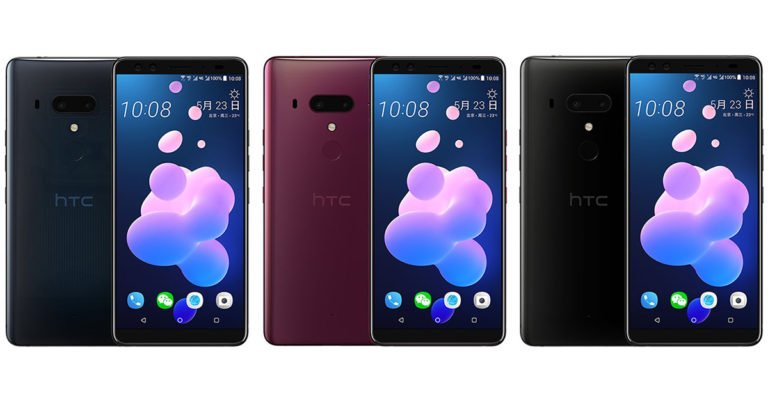


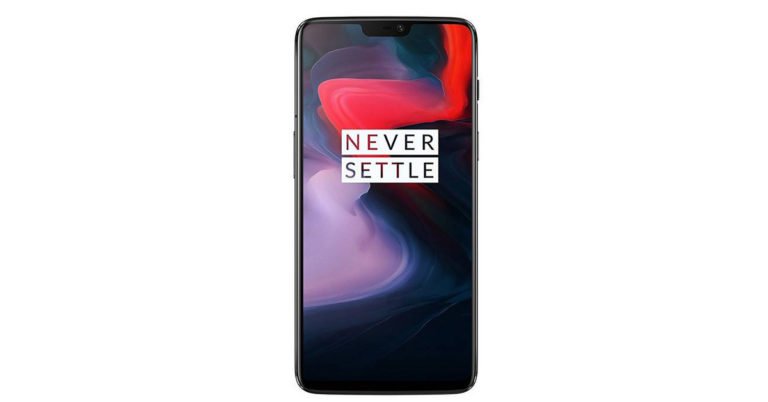

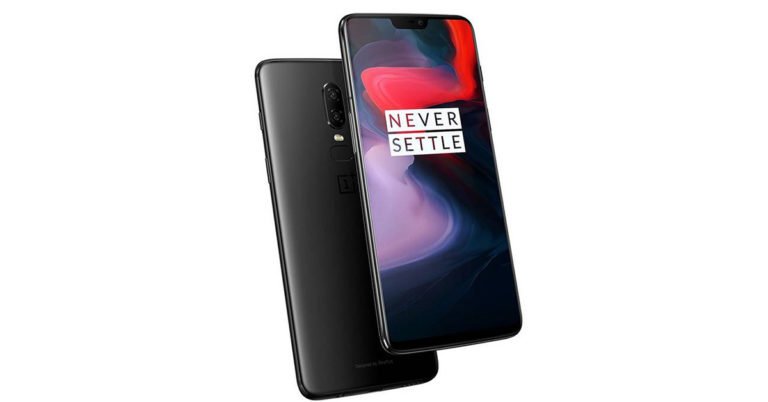
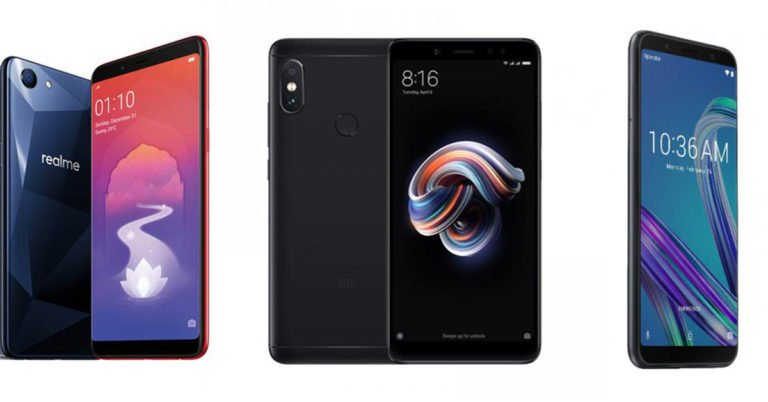
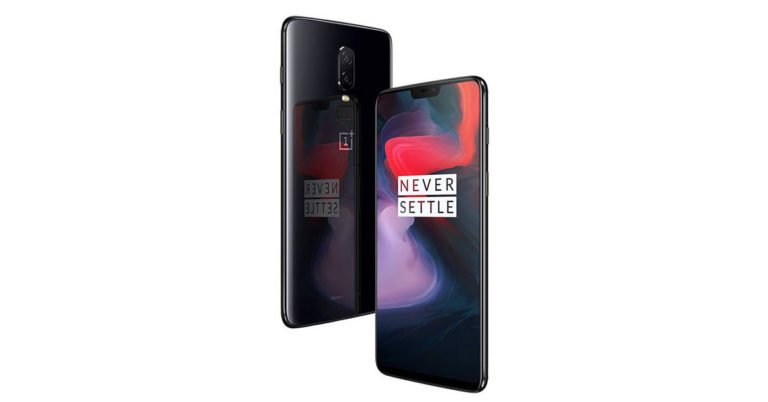
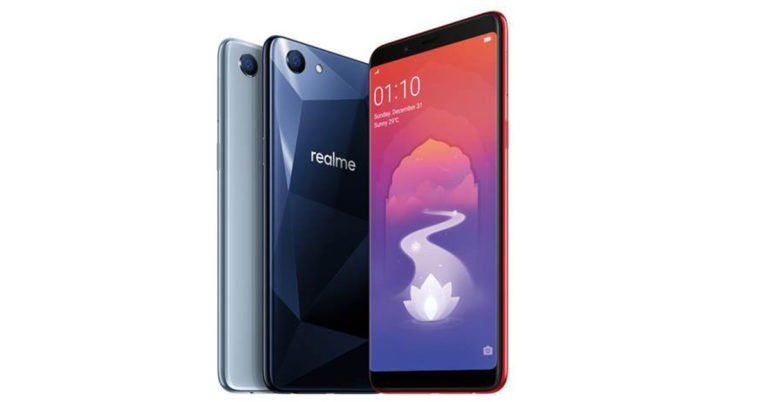
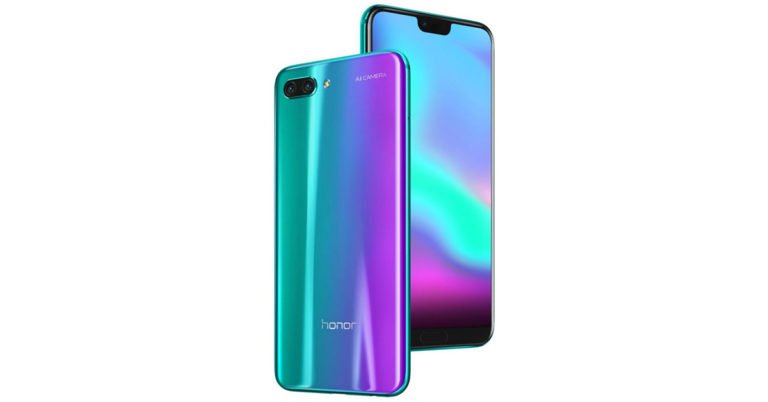
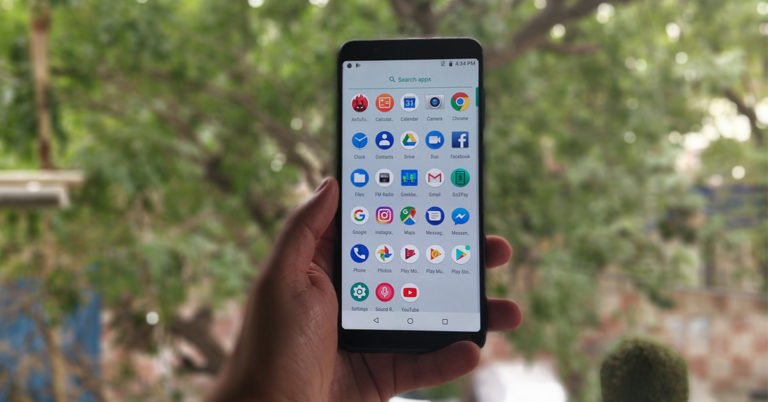












![[Video] Google Assistant Makes A Phone Call [Video] Google Assistant Makes A Phone Call](https://www.gadgetbridge.com/wp-content/uploads/2018/05/maxresdefault-768x432.jpg)
